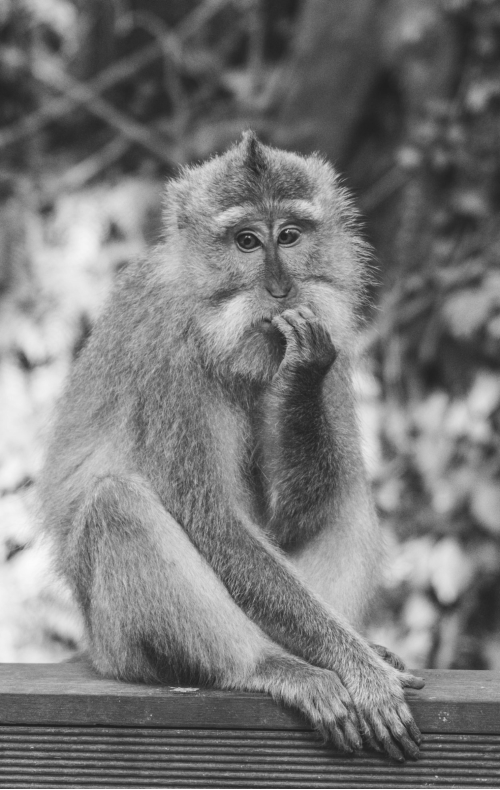Three Big Sublime Stopping Mistakes
... denial that stopping is possible, the exaggerated concern about attachment to stopping, and confusing stopping with seeing.

I've been unpacking how to work with the breath and stop, that is, enter meditative absorption. The Sublime Dharma Gates of Seeing then follow. Before addressing the gates of seeing, though, I want to address three mistakes concerning stopping. The first is to deny that stopping is possible, the second is exaggerating legitimate concerns about attachment to stopping, and the third is to confuse stopping with the vital gates of seeing. I'll take them up in that order.
For he first post in the series, "Aligning the Breath: Windy, Uneven, Ordinary, and Subtle" (open for all subscribers) and the previous post, "Dharma Gates to the Sublime: Counting, Following, Stopping," (open for paying subscribers), click below:


Denial
In contemporary Zen, you will find respected teachers who say that stopping isn't possible, and that Zen meditation is all about following the arising and passing of thoughts. That's just witness consciousness in denial. And offering such advice suggests that either these respected teachers are unaware from their own experience of the possibility and the power of stopping, or they are dumbing down their dharma presentation because they don't think you are capable of stopping.
Such advice (i.e., stopping isn't possible so just swirl in zazen) is fitting for you, though, if you want to spend your life swirling in suffering, leaving peace and freedom to luck, the many suffering beings be damned!
Ouch!
Remember Ikkyu from the last post?
But you probably wouldn't be reading this if you were inclined to leave peace to luck. If you do aspire to arouse the Way-Seeking Mind and vow with all your heart for the benefit of all the many beings to get to the essence of this life come hell or high water - you might throw yourself into the ancient method, verified generation after generation, that I'm outlining in this series (or some similar process).
Regarding stopping, Dogen puts it simply and directly in his "Universal Recommendations for Zazen:"
Yet some of the same denial-oriented folks mentioned above, say that although Dogen said this, he didn't mean it. What he meant was, "Don't shut up," or "You can't shut up."
After forty-seven years in this Zen milieu, I sometimes feel like old Captain Picard, held captive and tortured by the Cardassians. Okay, Tetsugan Sensei tells me that this is an old reference. But I am old!
As I was saying, all the good Captain has to do to lead a life of comfort (in captivity) is to say there are five lights when there are really four lights (scroll ahead to ~1:45 for the heart of it):
"Stop the working of the mind and consciousness?"
In this case, when Dogen says, "Shut up completely," we are told that we should repeat after those in denial that Dogen said, "Don't shut up completely," even though his words certainly mean (in sync with the 2,500 year tradition of the buddhadharma), "Shut the heck up completely."
Drop bodymind, even.
Stuck
The second mistake made about the gate of stopping is the over-emphasis on the danger of getting stuck in stopping. I have heard Zen lore about folks getting stuck, anecdotes about practitioners who wallow in stopping who even continued to sit many hours a day while their lives fall apart. However, I'm not personally familiar with any such cases.
Although such lore might refer to "real" situations and would reflect a deeply dysfunctional spiritual bypassing, they really are quite odd. Having one’s life in order, you see, is usually a precondition for deep states of quiet. Indeed, the aspiration to stop has led many practitioners through the centuries to lead simple, quiet, well-ordered lives, carefully aligned with the precepts.
In addition, generally when a person does stop, their Way-Seeking Mind is really cooking, and their bodymind is soft and open. They are well-versed in the method and open to feedback. Likewise, they are usually in a healthy teacher-student relationship. The reduction of unnecessary thinking, as well as the concomitant increase in joy and energy, should make the person more functional in their daily lives, not less. And quite a treat to hang out with.
So if someone is able to really quiet down while Rome burns, they may well have deeper issues than just attachment to stopping. It might be time for a friendly intervention and some psychotherapy and/or a twelve-step immersion! I image the scene starting like this: "My name is So-And-So and I'm a stopping addict."
Jesting aside, practitioners might get stuck in a dysfunctional stopping, ignoring the instructions in the method for going beyond stopping, so some caution is fitting. However, in today's practice scene, where few people put sufficient time and effort into truly stopping, it is more of a theoretical concern rather than something to emphasize.
Just remember the instructions for what to do after entering the gate of stopping - Zhiyi encourages us to reflect like this:
"'This absorption belongs entirely to the sphere of causes and conditions. Its existence depends entirely on the conjunction of those causes and conditions associated with the aggregates, sense realms, and sense bases. It is false, deceptive, and not reflective of reality. I am not now exercising any perceptive acuity or any form of conscious awareness. I must bring illuminating intelligence to bear here.' Having reflected thus, one then immediately becomes free of any attachment to “Stopping” and subsequently engages in the analysis associated with "Seeing" (the Fourth Dharma Gate to the Sublime)."
The presence of these instructions in a traditional source is support for some concern about getting stuck.
And, sadly, sometimes I've seen this concern used as a justification not to throw oneself fully into the method in order to awaken and benefit living beings, as if to say, "Take it easy, you might get stuck."

Confused
Mistaking stopping for seeing is a much more common error than getting stuck in stopping for stopping's sake. This confusion is also the reason that some practitioners do get stuck, at least in the idea of stopping. This confusion has been a problem through the centuries and continues today as well.
Here is an old koan case and commentary on this very theme:

Indeed, there is also a much-discussed incident from the time of Buddha of a practitioner who got stuck in stopping, mistaking the fourth dhyana. This is a different system for stopping than I'm presenting here, but refers to the same deep quiet and equanimity. The fourth stage of insight, again a different system, refers to deep seeing - that is, freedom from birth-death. Dogen takes this up in his fascicle, "The Bhiksu of the Fourth Dhyana" (Shizen biku), identifying three errors this practitioner made.
First, they went off on their own without following the advice of their teacher, isolated from feedback from their community. Second, this fourth dhyana practitioner, also known as the "unlearned monk," was not well-informed about the buddhadharma and did not understand the difference between the gates of stopping and the gates of seeing. So they were unlearned about the path of awakening - for a practitioner, a big mistake in itself.
Third, they were a stubborn asshole! And yes, some of us might resemblance this dear one, so please be kind.
Nevertheless, when this unlearned practitioner was dying, it became damn clear that they hadn't freed themself from birth-death, they then blamed the Buddha for deceiving them!
Forever? Talk about "Ouch!"
Given that I've been focussing on the teaching of the Tiantai master Zhiyi (538-597) in this series, I'd be remiss if I didn't point out that Dogen quotes extensively from a later Tiantai master, Zhanran (711-782, five generations after Zhiyi in the Tiantai lineage). For example, Zhanran said, "Those who have studied the sacred teachings have some knowledge of their stage; even if they exceed it, they easily understand it."
And know what to do about it.
Finally, it is also notable that Dogen's criticism of the unlearned, fourth dhyana practitioner focuses on their mistakenly confusing stopping with seeing. Dogen affirms the traditional path and says nothing at all to indicate that he thought the monk's error was engaging in the sublime gates of stopping and seeing.
It's like the dragon singing in a dried-up tree.
So we better get on with the Dharma Gates to Sublime Seeing. I'll be posting that soon, along with my view on how the koan Way harmonizes with Zhiyi's Great Vehicle (pre-Zen) approach - coming soon for paying subscribers!

If you'd like more information before deciding to subscribe, see
